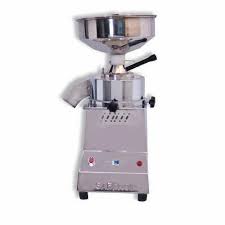Choosing the right dog food can be a daunting task with the multitude of options available in the market. Your dog’s diet plays a key role in maintaining their overall health and well-being, so it’s crucial to make informed decisions. This guide will walk you through the essential factors to consider when selecting the right food for your furry friend.
1. Understand Your Dog’s Nutritional Needs
Every dog has unique nutritional requirements based on factors such as breed, age, size, and activity level. Puppies require higher levels of protein and fat to support growth, while senior dogs may need fewer calories to prevent weight gain. High-energy breeds need more carbohydrates and fats compared to smaller, less active breeds. Understanding your dog’s specific needs is the first step to making the right food choices.
2. Types of Dog Food: Dry, Wet, and Semi-Moist
There are three primary types of dog food: dry kibble, wet canned food, and semi-moist food. Each type has its pros and cons. Dry kibble is convenient, cost-effective, and helps keep your dog’s teeth clean. Wet food is more palatable and hydrating but can be expensive and lead to dental issues. Semi-moist foods are often used as treats or for occasional feeding but usually contain more additives. Evaluate each type and choose the one that best fits your dog’s dietary needs.
3. Check the Ingredients List
When choosing dog food, the ingredients list should be one of the first things you check. Look for real meat (like chicken, beef, or lamb) listed as the first ingredient, as dogs require high-quality protein sources. Avoid foods that contain vague terms like “meat meal” or “animal by-products.” Additionally, stay away from foods with artificial preservatives, colors, and high levels of fillers like corn or soy, which provide little nutritional value.
4. Look for Nutritional Adequacy Statement
Dog foods should come with a nutritional adequacy statement from the Association of American Feed Control Officials (AAFCO) or other relevant bodies in your region. This statement indicates that the food meets minimum nutritional requirements for a specific life stage. If the food you’re considering lacks this label, it may not provide all the essential nutrients your dog needs.

5. Consider Special Dietary Requirements
Some dogs may have special dietary needs due to allergies, medical conditions, or sensitivities. Common food allergens include chicken, wheat, soy, and dairy. If your dog has allergies, consider hypoallergenic formulas with limited ingredients. For dogs with medical conditions such as diabetes, kidney disease, or obesity, consult your veterinarian for recommendations on prescription diets or specific nutrient formulations.
6. Assess Your Dog’s Age and Life Stage
Dogs have different nutritional needs at various life stages. Puppy food is designed to support growth and development, with higher protein and fat content. Adult dog food maintains energy levels and overall health, while senior dog food often includes added supplements like glucosamine for joint support. Choosing a food that matches your dog’s life stage helps ensure they receive the appropriate nutrients for optimal health.
7. Decide Between Grain-Free and Grain-Inclusive Diets
Grain-free diets have gained popularity in recent years, but they are not always necessary or beneficial for every dog. Grains like rice, oats, and barley provide valuable nutrients and fiber. Grain-free diets are ideal for dogs with grain allergies, but for others, a balanced grain-inclusive diet is a healthy and cost-effective option. Consult your veterinarian to determine the best choice for your dog.
8. Evaluate the Brand’s Reputation
Not all dog food brands are created equal. Research the brand’s reputation, manufacturing standards, and recall history. Brands that prioritize transparency and quality ingredients are more likely to produce reliable products. Additionally, reading reviews and seeking recommendations from other dog owners or veterinarians can help you gauge the reliability of a brand.
9. Transition Gradually to New Food
If you decide to switch your dog’s food, it’s important to do so gradually. Abrupt changes can lead to digestive upset, including diarrhea or vomiting. Start by mixing a small amount of the new food with your dog’s current food, gradually increasing the proportion over 7-10 days. Monitor your dog for any signs of discomfort during the transition period.
10. Determine the Right Portion Size
Overfeeding or underfeeding your dog can lead to weight-related health issues. Most dog food packages include feeding guidelines based on weight and activity level. However, these are general recommendations. Monitor your dog’s weight and adjust portions as needed. If you’re unsure about portion sizes, consult your veterinarian for personalized advice.
11. Monitor Your Dog’s Health and Behavior
Once you’ve chosen a dog food, it’s crucial to monitor your dog’s health and behavior regularly. Signs of a suitable diet include a shiny coat, healthy weight, regular bowel movements, and an energetic demeanor. If your dog experiences digestive issues, allergies, or changes in behavior, reconsider their diet and consult your veterinarian for guidance.
12. Seek Veterinary Guidance
Your veterinarian is an essential resource when it comes to your dog’s diet. They can help you determine the right type of food, address any medical concerns, and offer guidance on transitioning to new diets. Regular check-ups also allow your vet to monitor your dog’s weight, nutritional status, and overall health, ensuring their diet continues to meet their needs.
13. Cost vs. Quality: Finding the Right Balance
The cost of dog food varies widely, and higher prices don’t always guarantee better quality. While premium dog foods often contain higher-quality ingredients, many budget-friendly options still provide adequate nutrition. It’s essential to find a balance between cost and quality that fits your budget while meeting your dog’s nutritional requirements.
14. Homemade vs. Commercial Dog Food
Some pet owners prefer to prepare homemade meals for their dogs, believing it offers better control over ingredients and quality. While homemade diets can be beneficial, they require careful planning to ensure nutritional balance. If you choose to make homemade food, consult a veterinary nutritionist to create a well-rounded meal plan. Alternatively, high-quality commercial dog food offers a convenient and nutritionally complete option.
15. Experiment with Flavors and Textures
Dogs can be picky eaters, and offering a variety of flavors and textures can help keep them interested in their food. Some dogs prefer dry kibble, while others enjoy wet food or a combination of both. Introducing different protein sources like fish, beef, or lamb can also help prevent boredom and ensure a diverse range of nutrients in your dog’s diet.
16. Conclusion: Make Informed Choices for Your Dog’s Health
Choosing the right dog food is crucial for your pet’s health, energy, and happiness. By understanding your dog’s specific nutritional needs, considering factors like age, breed, and dietary requirements, and consulting your veterinarian, you can make informed decisions that contribute to your dog’s well-being. Remember, a balanced diet not only supports physical health but also plays a key role in your dog’s quality of life.



